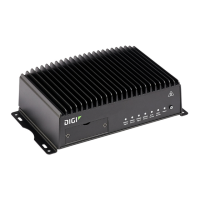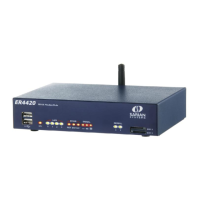Meter Engineers Handbook for Cellular Communication 17
Mounting and Power Options for Various Digi
TransPort Types
(
WR21, WR41, WR44)
in Metering Applications
COMMON TO ALL DIGI TRANSPORT MODELS
Digi TransPort routers are not designed to be exposed to the weather. They must be installed in enclosures that are
rated for at least IP66. Digi has a ready-made unit called the Utility Communication Hub (part number 70001699)
that comes with a Digi TransPort WR21 pre-mounted inside. It’s already IP66 certified and has the advantages of
battery backup and a multi-port switch if more than one Ethernet connection is needed. It also has a built in power
supply rated for up to 277Vac. Digi also has several integrator partners who specialize in weatherproof housing and
auxiliary power solutions.
Most Digi TransPort models are designed for a wide temperature range (-20° to +75° C typical) so unless you expect
extreme temperatures in your area there is no need to ventilate the enclosure. A few inches of open space in an
enclosure is usually suicient to dissipate any heat.
If the enclosure you are using is RF transparent (plastic) you may be able to use the antennas that come with the
Digi TransPort. It really depends on how close you are to the carrier towers. It’s important that the antennas be at
least 4 or 5 inches (more is better) from any metal object. Metal has the eect of detuning the antenna. You should
also take care to mount it securely (see options below) and not to get too close to any exposed AC lines.
If you are using a metal enclosure, or need higher gain antennas then what Digi can supply, you’ll need to use
external antennas. Generally the antennas can be mounted directly on the top of the enclosure but it might
sometimes be necessary to mount them remotely (you may need to mount them on a tall poll for instance to get
better visibility to a tower). Care must be taken to keep the coaxial cable length to a bare minimum. Long cables
introduce RF loss that can wipe out any advantages to remotely mounting the antenna. A good rule of thumb is to
keep the coaxial cable at, or less than, 15 feet if you are using RG174 or RG58. Better coaxial cable, like LMR400 for
example, can have longer runs. But shorter is always better.
A NOTE ABOUT LTE
In many 3G HSPA and EVDO networks, routers are frequently deployed and configured with two antennas to
achieve “receive diversity.” (The primary antenna transmits and receives while the secondary antenna is receive
only.) With this configuration, the router is better able to cope with multipath interference that occurs when signals
bounce o obstructions (e.g., buildings, trees or airplanes) and arrive at the antenna out of phase. Two receive
antennas, placed where signals can be best received and combined, can help counteract multipath interference.
Conversely, LTE uses multiple input/multiple output (MIMO) where both antennas transmit and receive. While it is
possible to use one antenna (and operate the device in SISO mode), two antennas are a better choice for optimum
performance. Using one antenna will cause bandwidth to vary based on the RF conditions at the operating site.
Application performance will also suer, sometimes cutting bandwidth as much as 50 percent. Regardless, best
practices call for using directly attached antennas.
5

